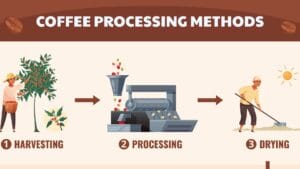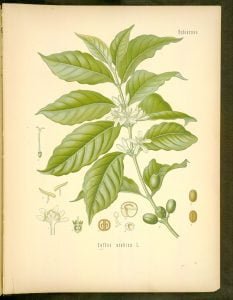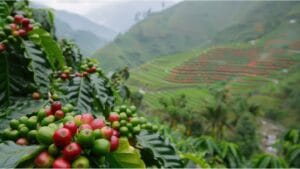Have you ever savored that perfect cup of coffee and wondered about its incredible journey? The farm to cup process combines nature, science, and human expertise. This journey connects continents and builds on knowledge passed down through generations. Each sip you take represents a remarkable transformation of humble coffee beans through a series of carefully orchestrated stages.
Every step matters in the coffee journey from farm to cup. Each phase—from growing in fertile soil to the final brewing—shapes the flavors and aromas in your cup of coffee. Nothing is unimportant in creating what you finally taste. Understanding this journey doesn’t just satisfy curiosity—it deepens appreciation and connects consumers to the global coffee community that makes each morning ritual possible.
Origins at the Farm – The Foundation of Coffee Quality
From Seed to Coffee Plants

The magic begins with selecting the right coffee variety for the right environment. Coffee plants belong primarily to two species:
- About 60% of global production
- Thrives in high altitudes (600-2,000 meters)
- Moderate temperatures (15-24°C)
- Requires rich, well-drained soil with proper shade.
- 40% of global production
- Thrives in lower elevations (0-800 meters)
- Tolerates higher temperatures (24-30°C)
- Grows well in various soil types with less shade requirement and greater rainfall tolerance.
There are also other coffee varieties such as Liberica or Excelsa but the yield is very low.
These basic growing differences shape the genetic makeup of the beans. They establish the baseline for every flavor possibility that follows in the coffee farm to cup journey.

The Impact of Geography and Climate on Flavor Potential
The concept of terroir—familiar to wine enthusiasts—applies equally to coffee. A study published in the Journal of Food Science reveals important findings:
- Coffee beans from heights above 1,500 meters have up to 30% more flavor compounds than beans from 900 meters.
- Higher altitudes slow bean development, allowing more time for complex compounds to form
Regional examples show clear differences:
- Coffee from Ethiopian Yirgacheffe region grows in volcanic soil. Which rich in nitrogen and phosphorus, producing distinctive floral and citrus notes
- Colombian beans from Huila develop chocolate and caramel notes from the region’s unique calcium-rich soils
Environmental factors don’t just influence flavor compounds—they basically shape which ones develop in the first place.
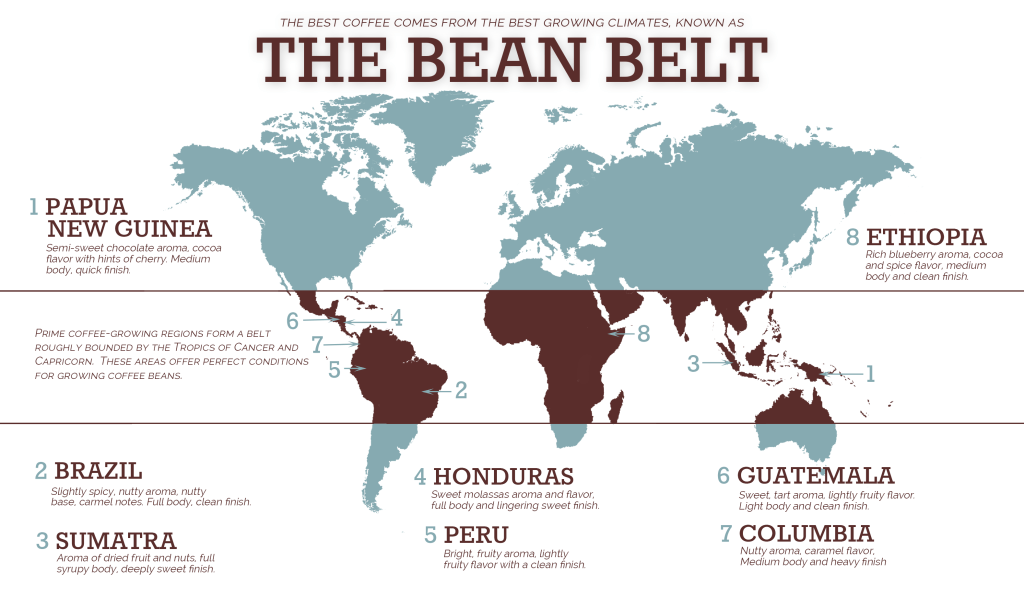
Harvesting – From Coffee Cherries to Coffee Beans
Basically there are 2 methods of harvesting:
1. Selective picking (Hand picking):
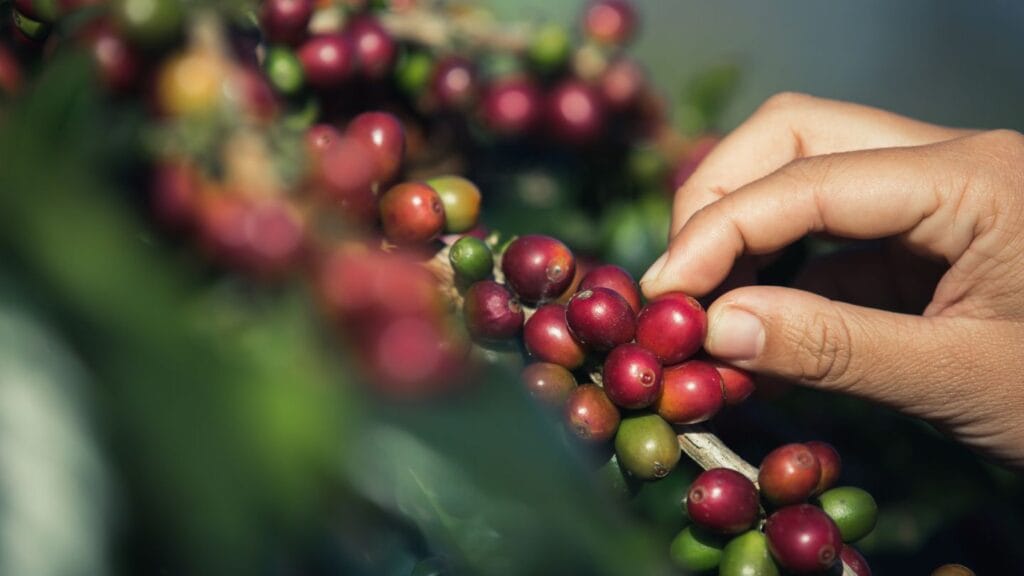
- Pickers choose only perfectly ripe coffee cherries
- They identify ripe cherries by color (deep red or yellow for some varieties)
- Ripe cherries give slightly when gently squeezed
- This method allows for quality control at the cherry level
- Skilled pickers collect only optimal fruit
2. Strip picking:
- Involves removing all cherries from branches regardless of ripeness
- Significantly impacts potential flavor
Studies by Brazilian scientists demonstrate:
- Uniformly ripe cherries contain balanced sugar-to-acid ratios crucial for complex flavor development
- Under ripe cherries contain harsh chlorogenic acids that create astringency
The ripeness of coffee cherries at harvest directly determines which processing methods will be most effective.
Processing – Where Flavor Takes Shape
Natural Process – The Beauty of Traditional Methods
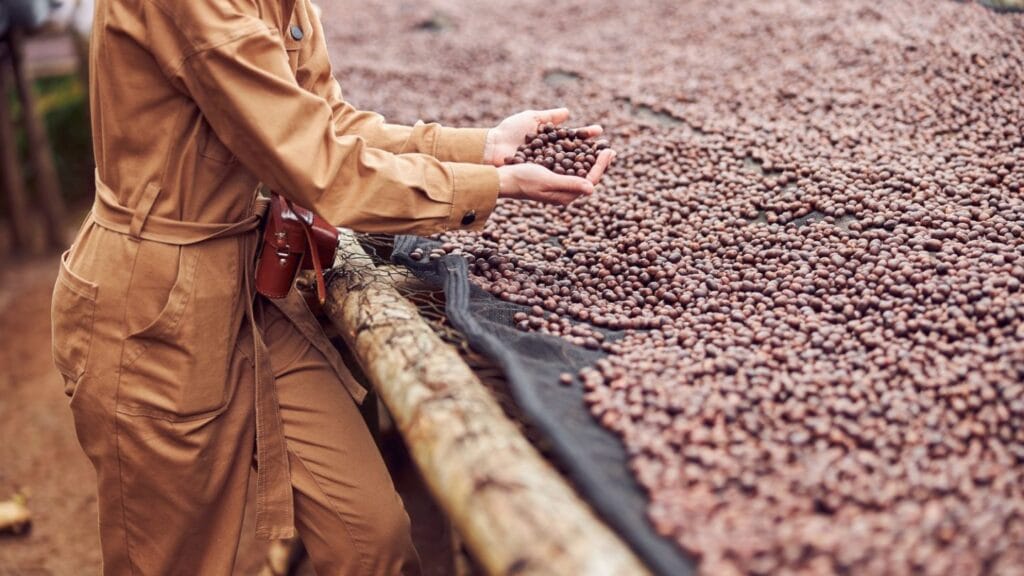
The natural process is the oldest method. It works by drying whole coffee cherries with the fruit still covering the beans. The process works like this:
- Careful sorting of harvested cherries
- Spreading cherries thinly on raised beds or patios
- Regular turning to ensure even drying
- Drying lasts 2-4 weeks
- Natural fermentation occurs as fruit sugars break down
Research from Food Chemistry shows:
- This method allows soluble compounds from the fruit to migrate into the seed
- The bean’s chemical composition changes significantly
- The resulting flavor profile typically features:
- Pronounced sweetness
- Full body
- Complex fruit notes (berries, tropical fruits, wine-like qualities)
However, the natural process requires precise control. Improper drying can lead to defects like ferment or phenol flavors.
Washed Process & Wet Process – The Clarity of Flavor
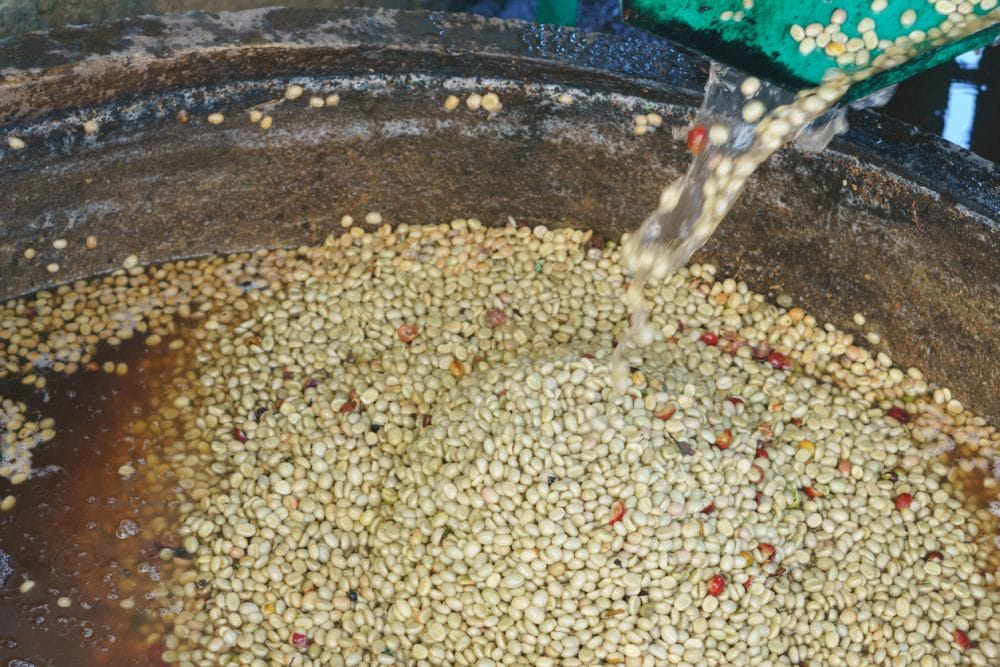
Unlike the natural method, the washed process (or wet process) strips away the fruit from the bean before drying starts. The steps include:
- Harvesting cherries
- Pulping to remove the outer skin
- Placing in fermentation tanks where naturally occurring microbes break down the remaining mucilage layer
- Fermentation takes 12-36 hours
A study published in Food Chemistry identified over 250 microbial species involved in this controlled fermentation. Each contributes to unique flavor development.
The washed process results in:
- Cleaner, brighter cups
- Pronounced acidity and clarity
- Flavors that directly showcase the bean’s inherent characteristics
Specialty coffee from regions like Kenya and Costa Rica often employs this method to highlight:
- Floral notes
- Vibrant acidity
- Transparent flavor profiles that reflect their terroir with minimal interference
Honey Processed – Balancing Two Worlds
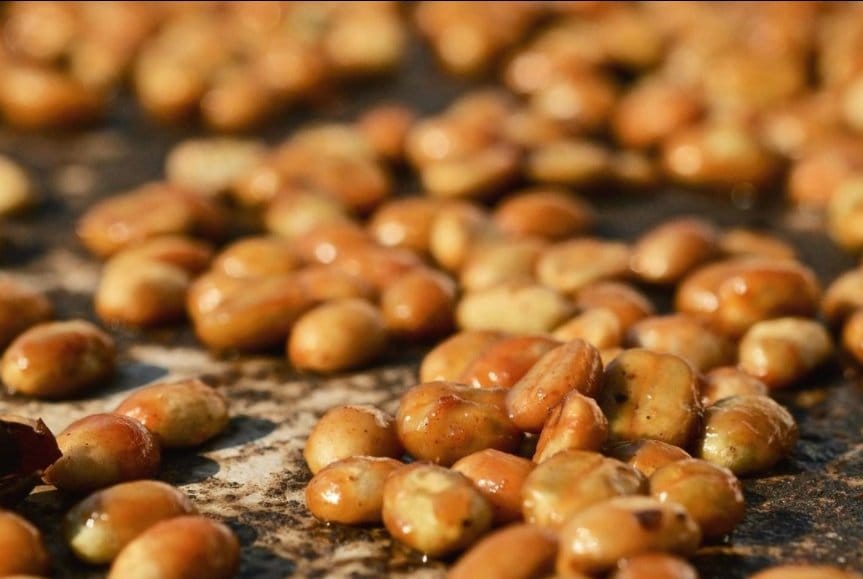
The honey processed method offers a middle ground between natural and washed techniques. The process uses no actual honey, despite its name. The term refers to the sticky, honey-like mucilage left on the bean during drying.
The process works like this:
- Pulping to remove the skin
- Leaving varying amounts of mucilage intact:
- White honey (minimal mucilage)
- Yellow honey (moderate mucilage)
- Red honey (significant mucilage)
- Black honey (maximum retention)
Studies show that the amount of sticky pulp left on the bean directly affects how sweet and full-bodied your coffee tastes.
Honey processed coffees typically feature:
- Balanced sweetness with pleasant acidity
- Fruit notes alongside caramel or chocolate characteristics
- A unique flavor profile combining the best attributes of both washed and natural methods
This processing method has gained popularity in regions like Costa Rica and El Salvador.
Drying Process – The Final Critical Decision
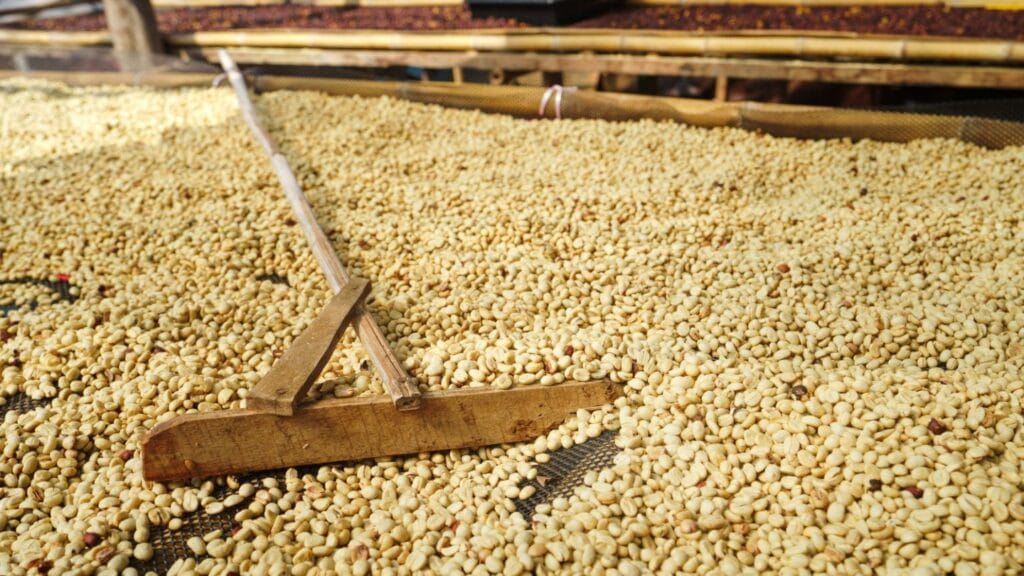
No matter which processing method farmers use, dry the beans is the last key step before storing and shipping the green coffee beans.
Key factors in drying:
- Precise moisture control is essential
- Beans must reach 10-12% moisture content
- This narrow range balances stability and flavor potential
- Too high moisture: beans risk mold development
- Too low moisture: flavors become flat and lifeless
Research on Food Chemistry shows:
- Slow, even drying preserves more volatile compounds responsible for aroma and flavor
- Rapid mechanical drying preserves fewer compounds
- Temperature control is equally crucial
- Excessive heat causes cellular breakdown and premature release of aromatic compounds
These methodical decisions throughout processing establish the foundation for all subsequent farm to cup coffee quality. They create the palette from which roasters will work their changing magic.
The Transformation Journey: From Green Coffee to Roasted Beans
The Art of Coffee Roasting – Where Science Meets Intuition
Turning plain green coffee seeds into fragrant beans requires a careful mix of chemistry, physics, and skilled human judgment.
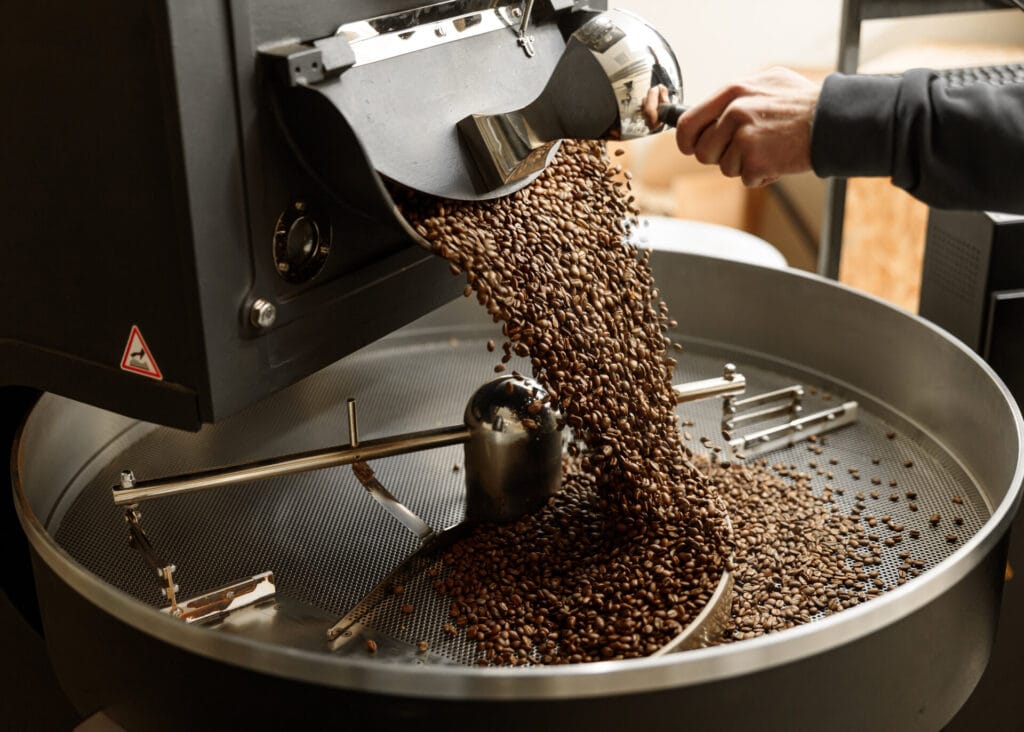
Coffee roasting progresses through three distinct phases:
Drying phase (0-160°C)
- Endothermic phase
- Moisture evaporates
- Beans turn from green to yellow
Browning phase (160-190°C)
- Maillard reactions begin
- Hundreds of new compounds form
Development phase (190-230°C)
- Internal bean pressure builds
- Characteristic “first crack” occurs
- Rapid flavor development happens
Master roasters don’t simply follow recipes—they “read” the beans through multiple sensory inputs. Research from the Specialty Coffee Association reveals:
Expert roasters make up to 15 critical adjustments during a single roasting session. They monitor variables like:
- Rate of rise
- Bean temperature
- Air temperature
- Color development
This constant dialogue between roaster and bean exemplifies the human element in the coffee from farm to cup journey.
From Light to Dark Roast – The Art of Flavor Balance
The spectrum from light to dark roast represents different philosophies about coffee’s essential character.

Light roasts (196-205°C):
- Dropped just after first crack
- Preserve origin-specific attributes and acidity
- Compounds like 2-methylbutanoic acid that create berry notes remain intact
- Citric acid remains intact
Medium roasts (205-215°C):
- Develop balance between acidity and body
- Sucrose fully caramelizes
- Create sweeter, balanced profiles
Dark roast coffee beans (215-230°C):
- Often reach second crack
- Significant breakdown of chlorogenic acids into phenolic compounds
- Contribute bittersweet, smoky characteristics
- Reduce perceived acidity
A study in the Journal of Agricultural and Food Chemistry shows:
- Antioxidant profiles shift dramatically across roast levels
- Light roasts retain more chlorogenic acids
- Dark roasts develop more melanoidins
- Each offers different potential health benefits
This spectrum allows roasters to highlight either:
- The terroir-driven characteristics preserved from farm and processing
- Their artistry through roast-driven flavor development
The Final Step: From Roasted Beans to Cup of Coffee
Brewing Methods and Their Impact on Flavors and Aromas
The brewing approach represents the final interpreter of all preceding work in the farm to cup journey. Each method applies unique combinations of:
- Time
- Temperature
- Grind Size
- Pressure
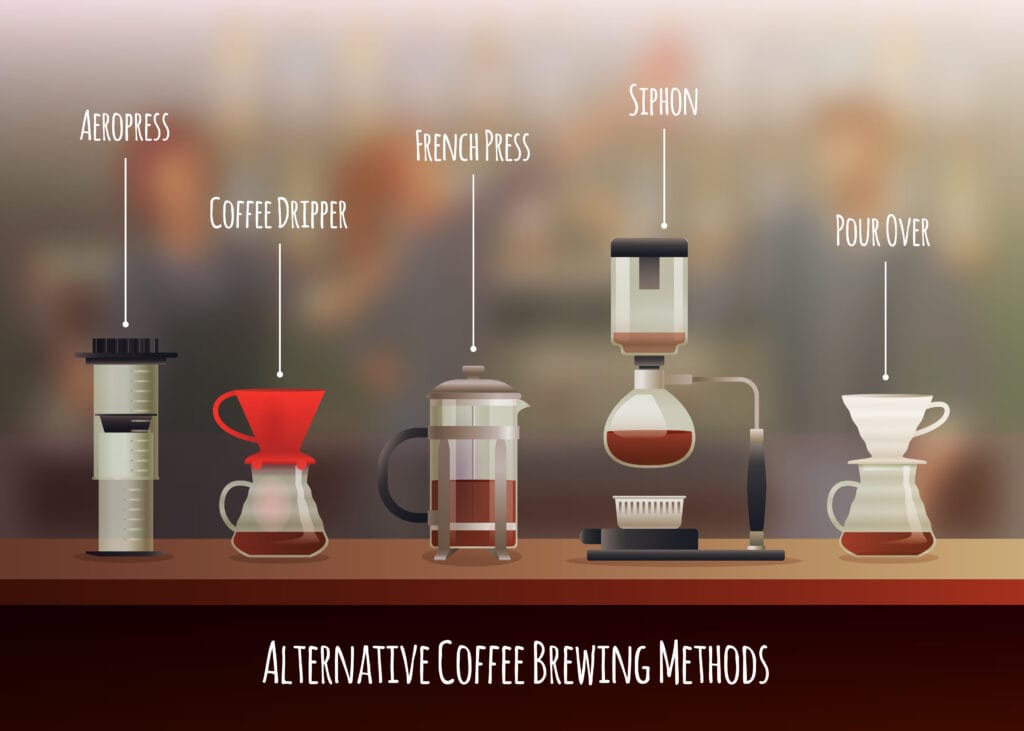
- 9 bars of pressure
- Applied for 25-30 seconds
- At 90-94°C
- Creates concentrated extractions
- Pronounced body
- Emulsified oils
- Showcases roast characteristics

- Gentle 2-3 minute percolation
- Slightly lower temperatures (88-92°C)
- Excels at highlighting delicate flavors and aromas
- Developed during cultivation and processing
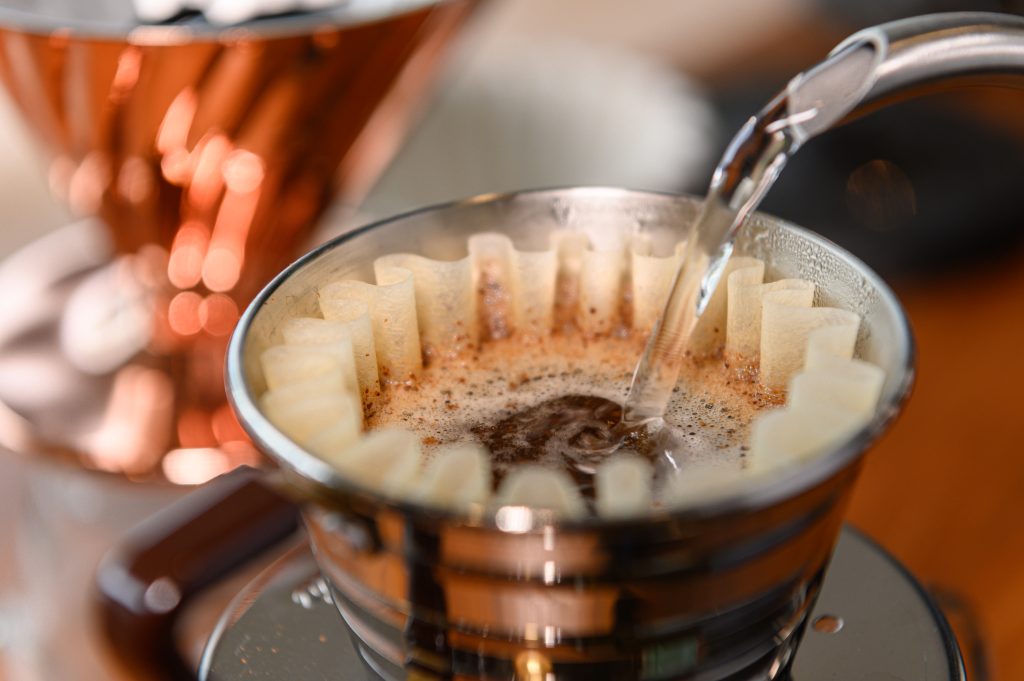
Immersion methods (like French press):
- Allow for full saturation
- Longer brew times (4-5 minutes)
- Extract deeper notes
- Maintain oils that might otherwise be trapped by paper filters
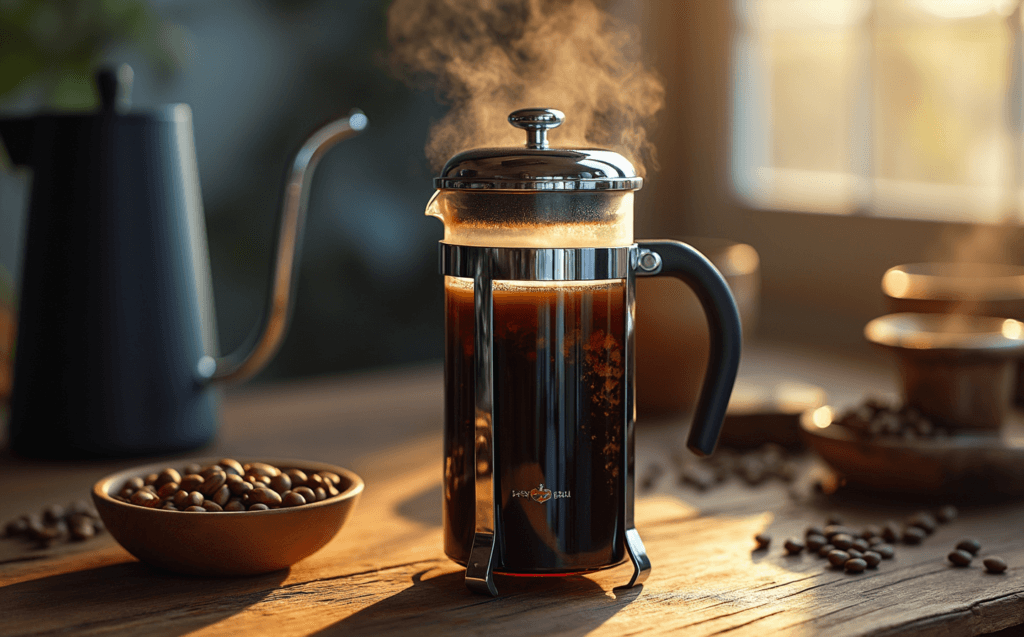
A study in Food Research International found:
- Brewing method can alter the concentration of key flavor compounds by up to 70%
- This happens even when using identical beans
This final translation of chemical potential into sensory experience represents perhaps the most accessible point where consumers can influence their coffee experience.
Tasting – The Art of Evaluating the Farm to Cup Journey
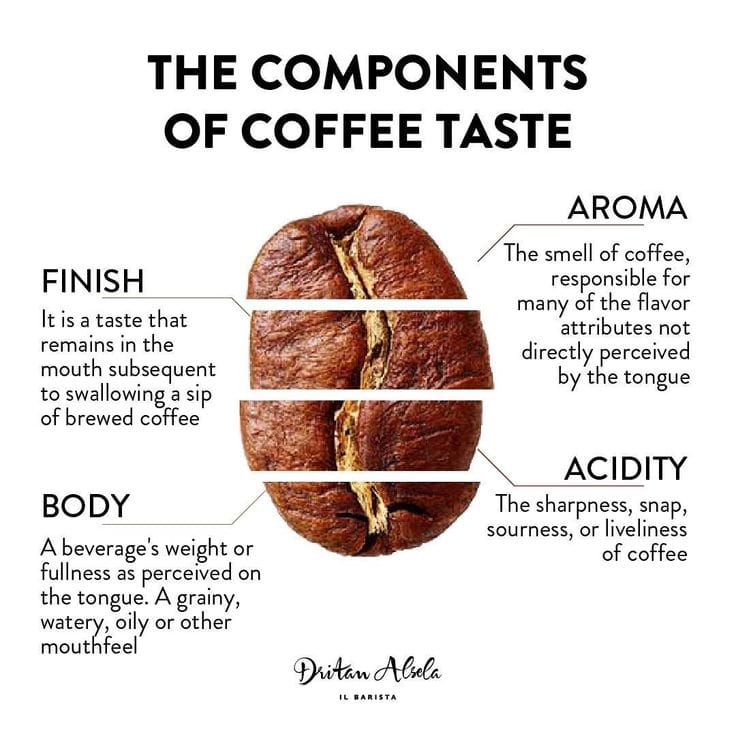
The culmination of this extraordinary journey arrives when we evaluate the final cup of coffee using our senses. Professional tasters follow the Specialty Coffee Association’s rigorous cupping protocol:
Standard preparation:
- 12g coffee to 200ml water
- Water at 93°C
- Standardized evaluation timing
Tasting process:
- First assess dry fragrance
- Then assess wet aroma
- Slurp the coffee across their palates
- Allow vapors to reach all olfactory receptors
Evaluation attributes (100-point scale):
- Fragrance/aroma
- Flavor
- Aftertaste
- Acidity
- Body
- Balance
- Evenness
- Clean cup
- Sweetness
- Overall impression
Connecting sensory experience to production:
- Floral flavors and aromas might trace back to specific flavor compounds developed at high altitudes
- Bright acidity could reflect both terroir and careful processing
- A full body might showcase skillful roasting
This method helps tasters pinpoint exactly which choices—from seed selection to brewing temperature—shaped the final taste experience. It brings the entire farm to cup journey full circle.
Conclusion
The coffee journey from farm to cup is like a symphony where every part matters:
- Each stage (growing, harvesting, processing, roasting, brewing) is essential
- If one step fails, the quality suffers
- When all steps work together, you get an amazing experience
Your cup of coffee connects you to:
- Farmers who nurture the plants
- Processors who develop the flavors
- Roasters who perfect the beans
- A global network of coffee expertise
How to appreciate coffee better:
- Look for transparent coffee companies
- Support roasters with direct farmer relationships
- Choose businesses that practice sustainable sourcing
- Learn about how your coffee was processed and roasted
Understanding this journey does two important things:
- It makes your coffee taste better because you notice more flavors
- It helps create a fairer, more sustainable coffee world for the future
Frequently Asked Questions about Farm to Cup Coffee
What is the farm to cup coffee journey?
The farm‑to‑cup coffee journey is the complete process that transforms a coffee bean from a seedling planted in coffee farms, through harvesting, chosen processing and drying methods, precise roasting, and the final brewing, into the cup of coffee you enjoy.
How does coffee variety (Arabica vs. Robusta) affect flavor in the farm to cup journey?
Arabica beans, grown at higher elevations and lower temperatures, deliver brighter acidity, nuanced fruit notes, and a smoother body, while Robusta beans, suited to lower altitudes, provide higher caffeine, fuller body, and a more robust, earthy flavor—both varieties influence the core taste profile you taste in the final cup.
What processing methods exist in the farm to cup journey?
Processing starts with harvesting ripe cherries, then choosing between natural (dry) fermentation, washed (wet) fermentation, or honey processing, followed by careful drying to 10‑12% moisture. Each method steers the bean’s sugar‑acid balance, fruit character, and overall flavor profile.
How does roasting level influence the taste in the farm to cup experience?
Roasting creates the three distinct phases—drying, browning, and development—where light roasts preserve acidity and origin‑specific fruit notes, medium roasts balance acidity and body, and dark roasts emphasize smoky, bittersweet flavors and reduce perceived acidity while boosting body.
Which brewing techniques best highlight the farm to cup flavor profile?
Brewing methods that suit a particular cup are chosen based on the bean’s roast and processing: pour‑over and Aeropress reveal delicate acidity, the French press delivers full body and oils, and espresso extracts concentrated roast characteristics—all providing the richest expression of the farm‑to‑cup journey.



